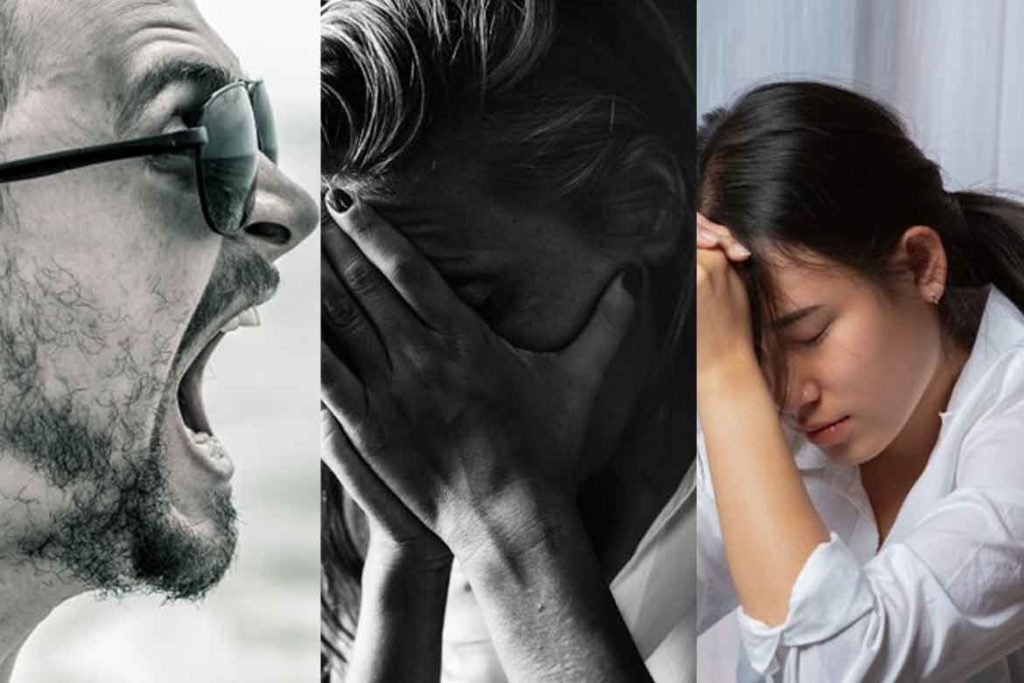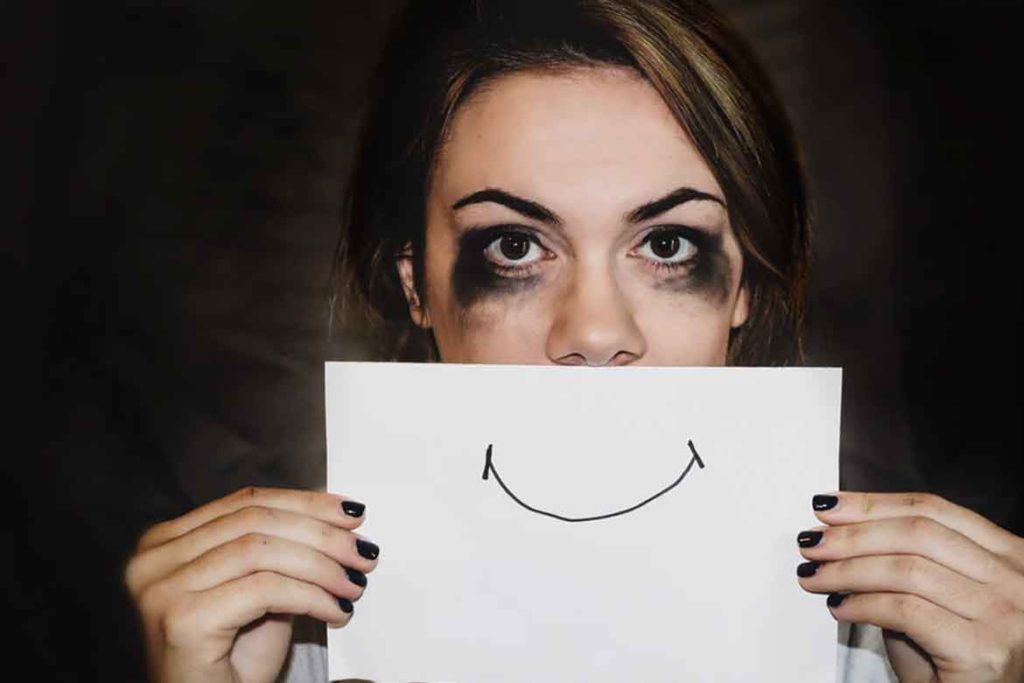- Introduction
- What is depression?
- How does anyone come out from depression?
- Symptoms of depression
- Types of depression
- When to see a doctor:
- Is depression treatable?
Introduction
As we know, the human mind has enormous capabilities. However, if it takes form of mental illness then there is no other suffering like it. If the capabilities of your mind work in your favor, your life becomes fantastic but if not, then your mind itself becomes your biggest enemy. If you are upset with your parents, siblings, boss or any relative then you can run away from them. But if you are not able to control your own mind; if your mind is pushing you towards negative things, then you can never run away from it. This situation called Psychological Condition. This can be the beginnings of Depression.
We all feel a little down in some point of life. Whether we are going through a difficult time with our work or family relationships or just are physically drained for long time, we can feel a little depressed once a while. However, we often get mixed up between low mood, unhappiness and depression. Low mood and unhappiness are different from Depression. Additionally, depression is not the same as merely feeling unhappy. In fact, it feels like you’ll never be happy again.
So, it’s quite important to known if our feelings are a normal emotional reaction to stressful times, or whether we’re suffering from depression. Depression and Bad Mental health are not taken seriously and still not viewed as a major disease in our society since yet. But, if depression is not treated at the right time, it can and will end your life.
What is Depression?
Sometimes feeling low is common but when you mentally start feeling that you can not do anything in your life or feel hopeless, it takes the form of depression.
Additionally, if you are suffering from depression, it can disturb your sleep and appetite as well, as you can feel tiredness and poor concentration.
Depression can also affect how you feel, think, and handle daily activities. The effects of depression can be long or short lasting. If you see symptoms related to depression for at least 2 weeks, then only you can go for its diagnosis.
How does anyone come out from depression?
It totally depends on the level of damage your mind takes. Some people are able to come out of this disease after some time but, in some pathological cases, it totally depends on physical form of the brain. In such condition we need to chemically support the brain from outside.
But no matter how useless the condition is, you can still get yourself out of depression. This is possible by understanding the cause of your depression and recognizing the different symptoms and types of it. In this way, you can take first step to overcome with your problem.
Symptoms of depression
If at least five of the following symptoms appear in a person for 2 consecutive weeks, then it can be considered a victim of depression.
- Feeling sad
- Feeling angry
- Depressed mood most of the day
- Loss of energy or increased fatigue
- Loss of interest in all normal activities, such as sex, daily routine work
- Sleep disturbances, including insomnia or sleeping too much
- Tiredness and lack of energy, so even small tasks take extra effort
- Unexplained physical problems, such as back pain or headaches
- Loss of concentration
- Changes in appetite that result in weight loss or gain
- Difficulty thinking, concentrating, or taking decisions
- Restlessness or irritability
- Feelings of anxiety
- Feelings of worthlessness, hopelessness
- Thoughts of death or attempts at suicide

Types of depression
Depression can be mild or severe, as well as short-lived or chronic. When we talk about depression, they often divide it into two parts i.e Clinical or Regular. Clinical depression requires treatment but on the second hand any one can be suffer with regular depression. There are many types of depression. Here are some of them.
Major Depressive Disorder (M.D.D)
If someone is suffering from clinical depression, they are generally referring to major depressive disorder (M.D.D). People which one suffering with clinical depression is marked by a depressed mood most of the day, particularly in the morning. They have a loss of interest in normal activities and their relationships.
This type of disorder is a mood disorder characterized by a number of key features:
- Depressed mood
- Lack of interest in activities normally enjoyed
- Changes in weight
- Changes in sleep
- Fatigue
- Feelings of worthlessness and guilt
- Difficulty concentrating
- Thoughts of death and suicide
Persistent depressive disorder (P.D.D)
Persistent depressive disorder is a depressed mood that lasts for at least two years. It can be mild, moderate, or severe. It is also known as Dysthymia. The person should have been feeling chronically depressed in which an episode lingers for a long period of time, sometimes two years or more.
P.D.D symptoms include:
- Feelings of sadness
- Loss of interest and pleasure
- Anger and irritability
- Feelings of guilt
- Low self-esteem
- Difficulty falling or staying asleep
- Sleeping too much
- Feelings of hopelessness
- Fatigue and lack of energy
- Changes in appetite
- Trouble concentrating
- Treatment given by medications and psychotherapy.
Bipolar disorder
This condition is different from depression, but it is included in this list is because someone with bipolar disorder experiences extreme mood disturbances that affect mood, thoughts, and person behavior too. Bipolar disorder is two main types Bipolar I and Bipolar II disorder.
Bipolar I involve episodes of severe mania and often depression. Conversely, Bipolar II disorder involves a less severe form of mania called hypomania.
Its symptoms include:
- Fatigue, insomnia, and lethargy
- Unexplained aches, pains, and psychomotor agitation
- Hopelessness and loss of self-esteem
- Irritability and anxiety
- Indecision and disorganization

Seasonal affective disorder (SAD)
SAD is a mood disorder that has a seasonal pattern. It’s characterized by mood disturbances (either periods of depression or mania) that begin and end in a particular season. Depression which starts in winter and subsides when the season ends is the most common. If a person experiences such symptoms during the winter for one to two years, then only this type of depression can be treated.
- SAD symptoms include:
- Lack of energy,
- Sleep too much,
- Overeat,
- Gain weight,
- Crave for carbohydrates.

Premenstrual Dysphoric Disorder (P.M.D.D)
Premenstrual dysphoric disorder (P.M.D.D) knows as a cyclic, hormone-based mood disorder, we can consider as a severe and disabling form of premenstrual syndrome (PMS). Among the most common symptoms of premenstrual syndrome (PMS) are irritability, fatigue, anxiety, moodiness, bloating, increased appetite, food cravings, aches, and breast tenderness.
Additionally, many statistics say that up to 85% of women experience PMS and only 5% of women are diagnosed with P.M.D.D. If a woman experiences symptoms related to P.M.D.D during menstruation for at least the past 1 year and if these have had an impact on her work and her social life, only then can we confirm this type of depression.
P.M.D.D symptoms may include:
- Extreme fatigue
- Feeling sad, hopeless, or self-critical
- Severe feelings of stress or anxiety
- Mood swings, often with bouts of crying
- Irritability
- Inability to concentrate
- Food cravings or bingeing
When to see a doctor?
If you are experiencing symptoms of various types of depression from at least 2 weeks then you should immediately book an appointment with your personal doctor. If you are reluctant to seek treatment with your medical expert then you should, talk to your friend or loved one, or any faith leader, or someone else you trust. You will feel very light talking to someone else about this kind of change happening inside your body.
Is depression treatable?
Although depression can make you feel hopeless, there is hope for those who seek a diagnosis and comply with treatment. In fact, depression is one of the most treatable types of mental illness, with 80% to 90% percent of people responding to treatment.
Get More Updates on Depression and Mental Health
